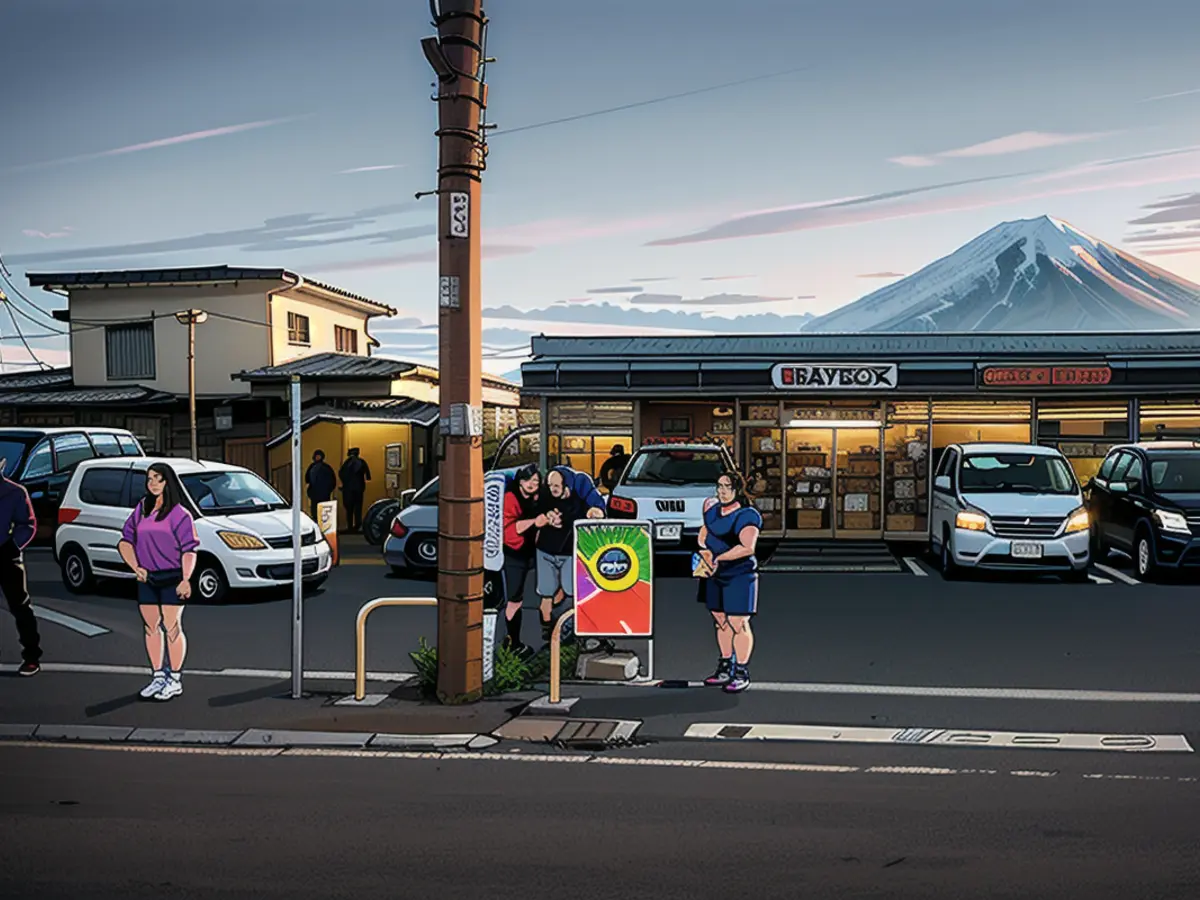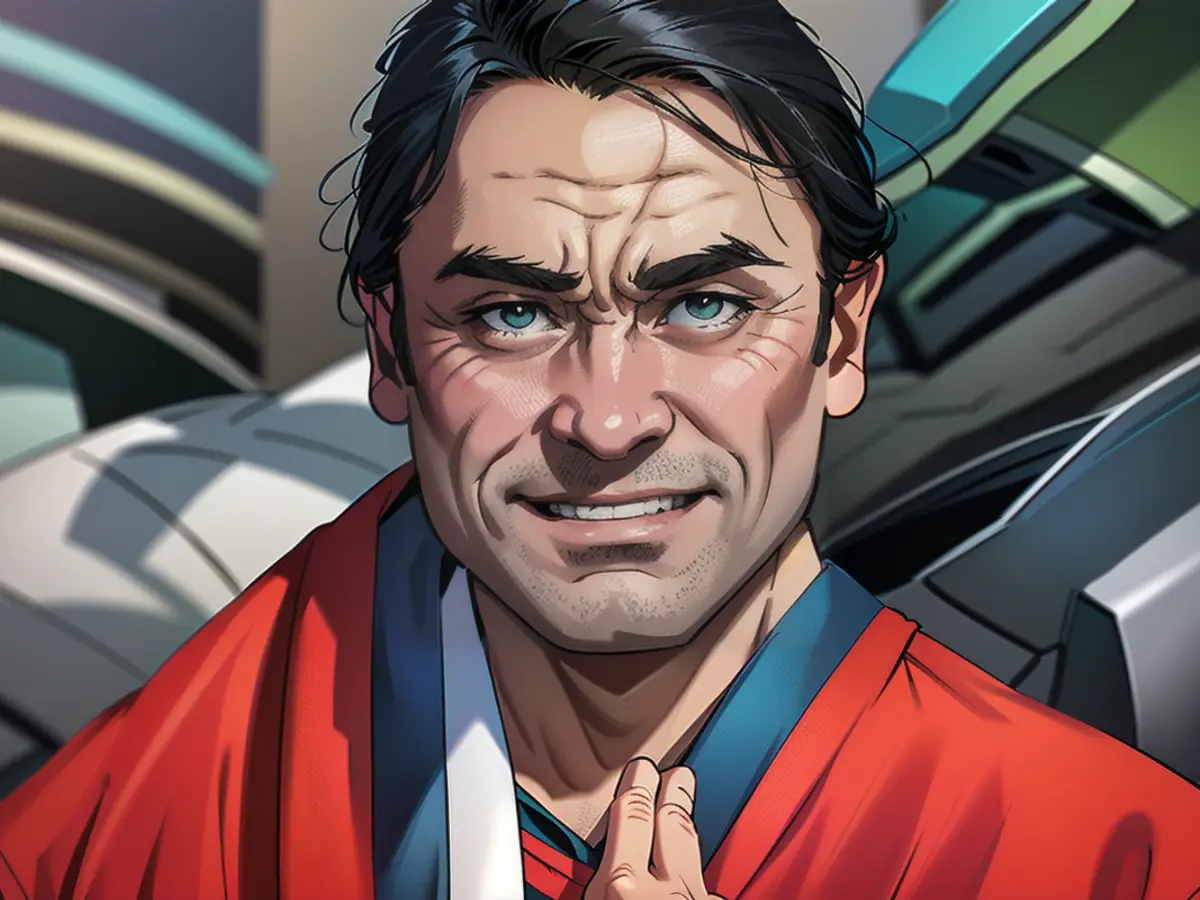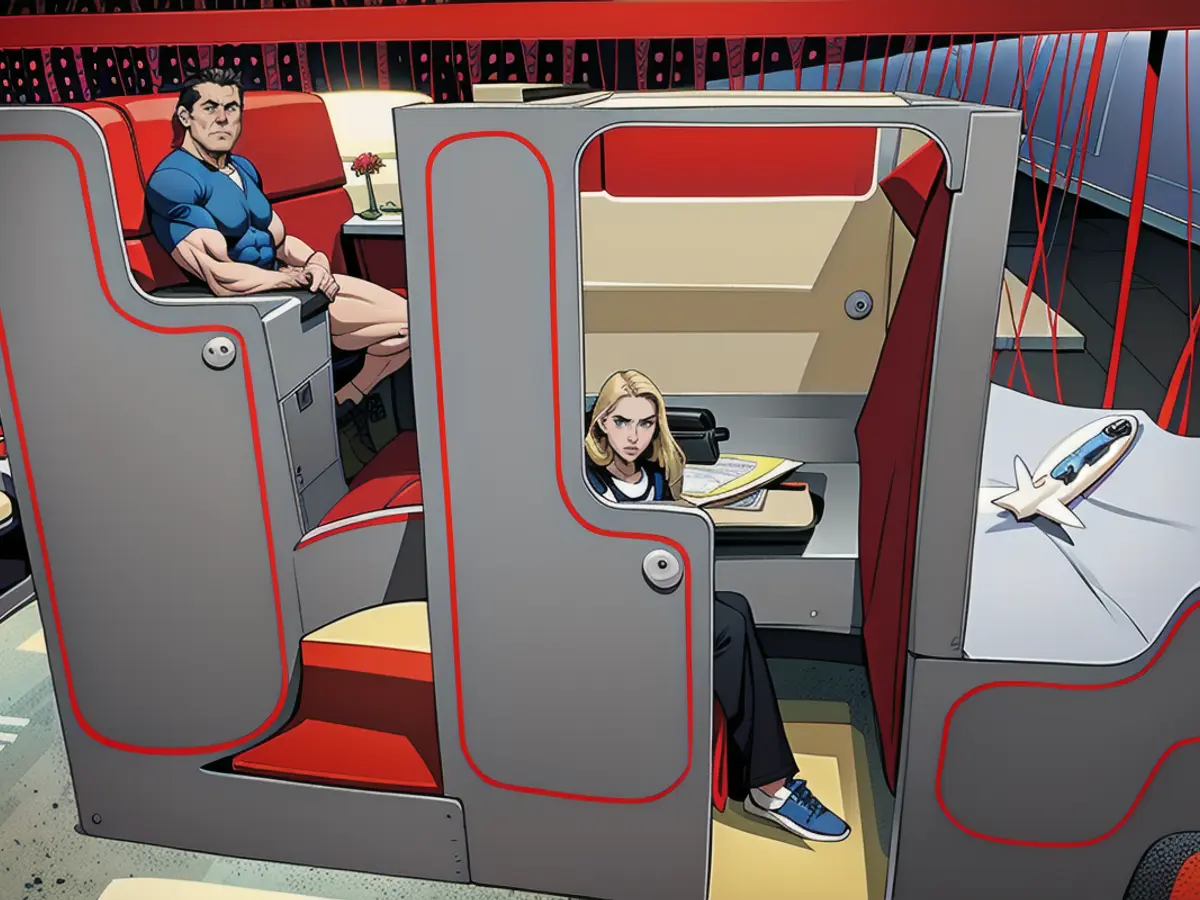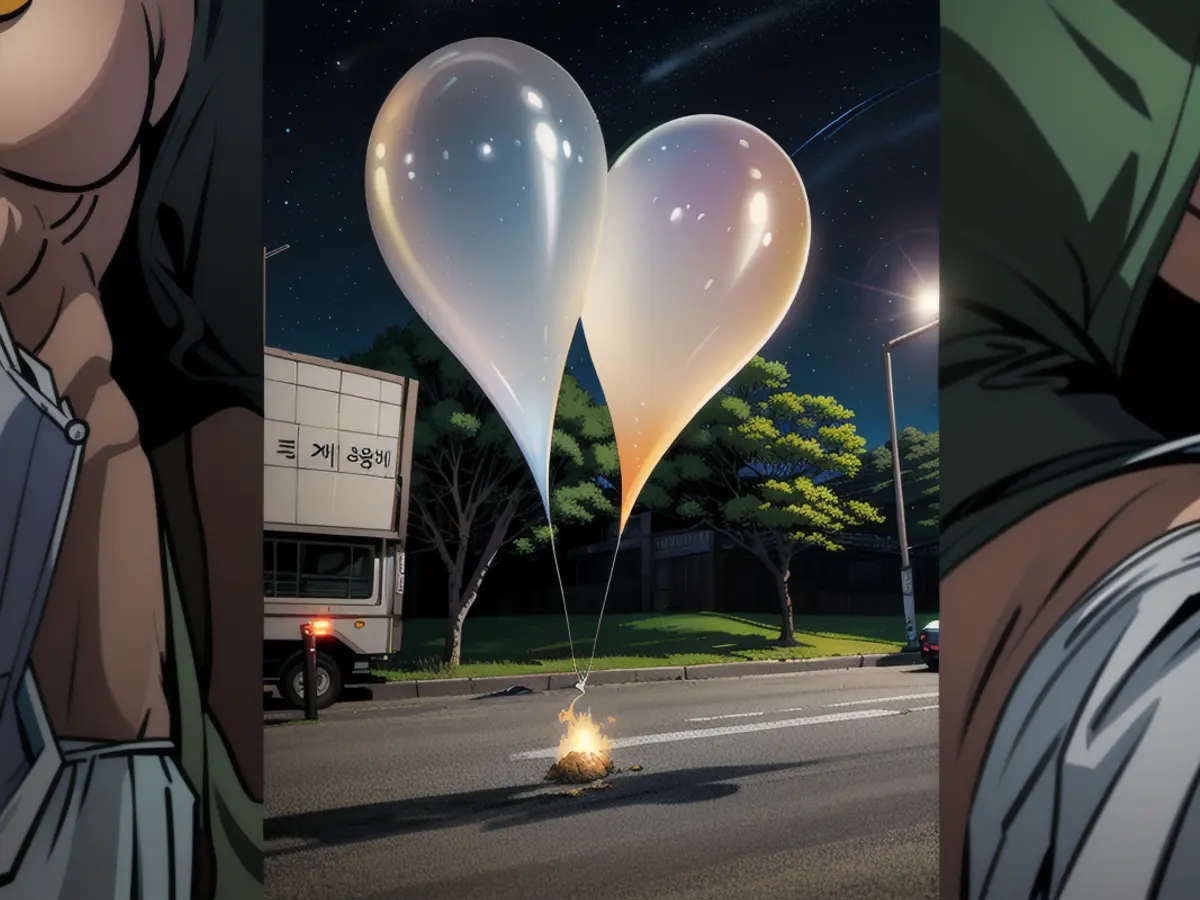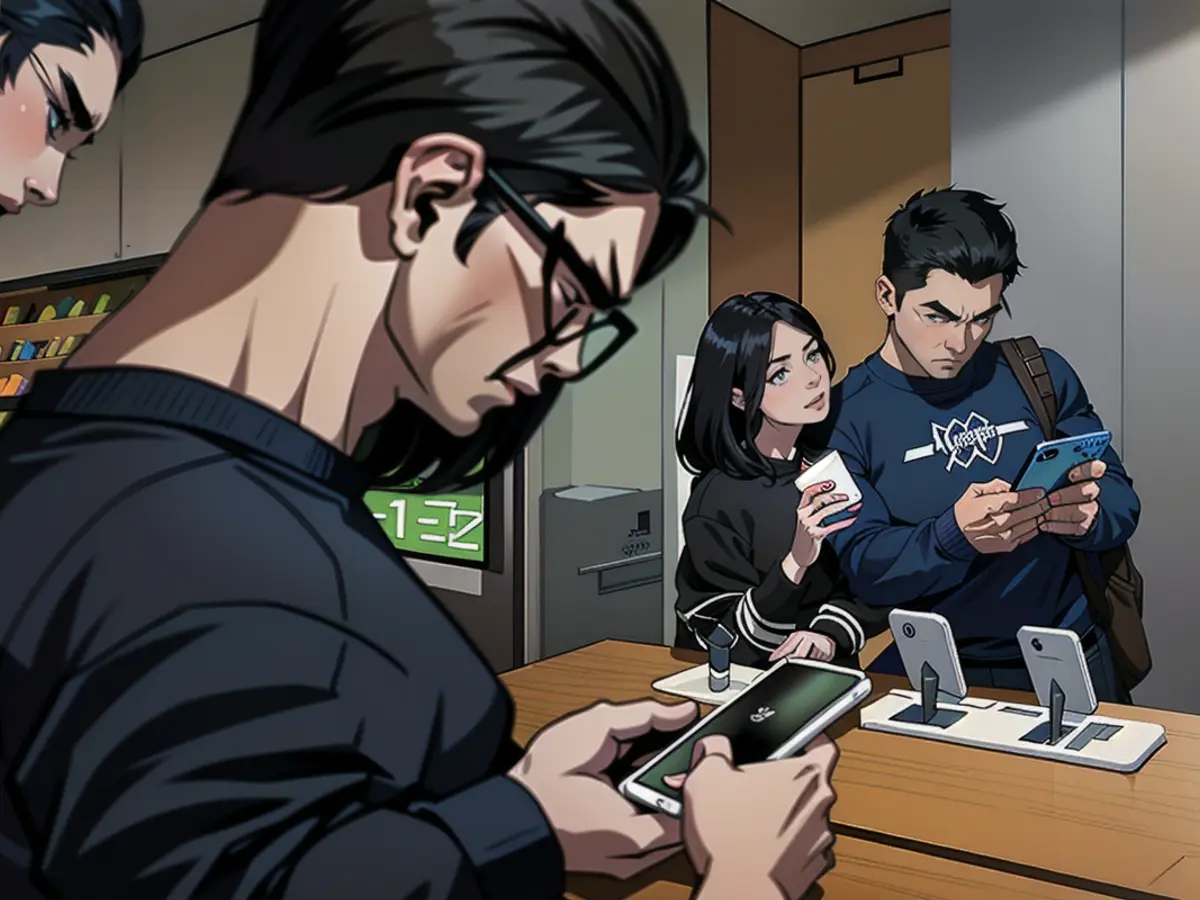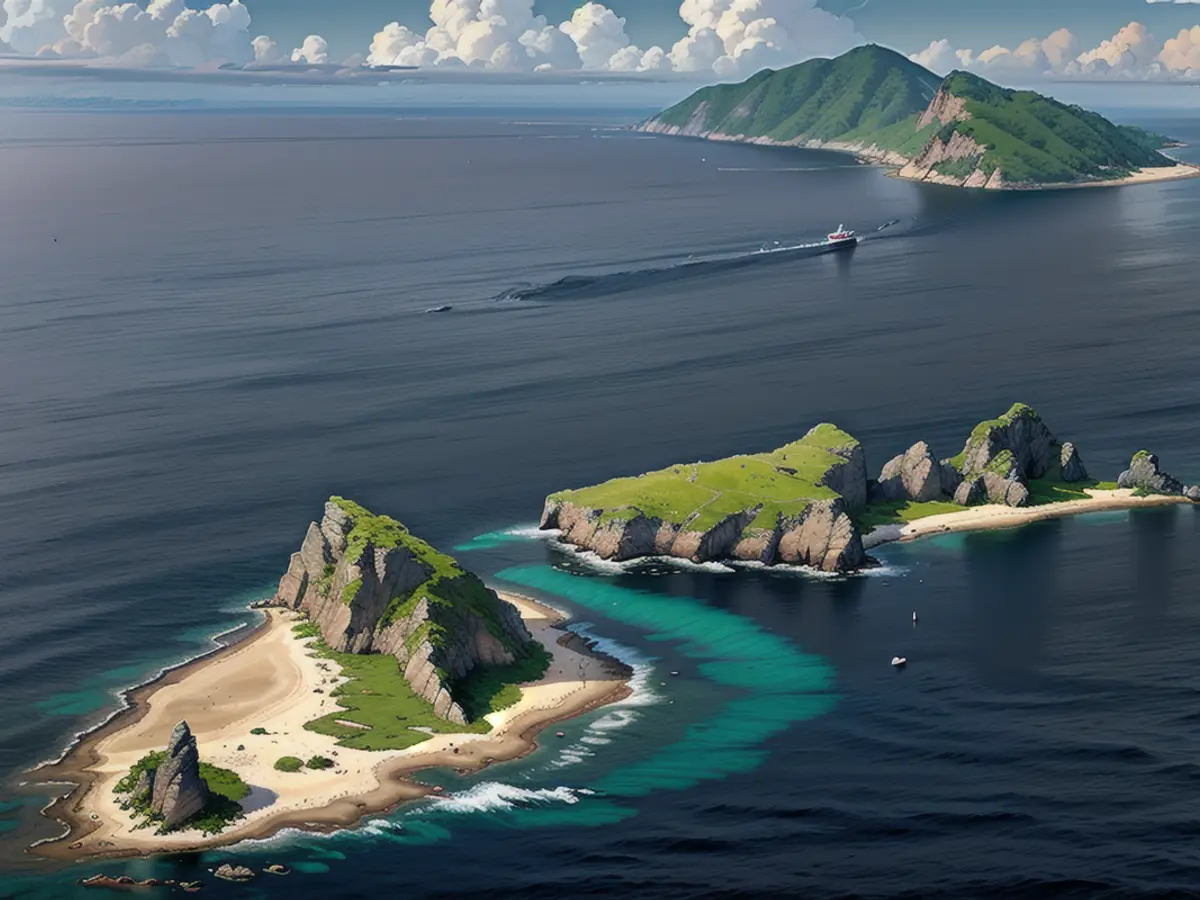A popular Japanese store near Mount Fuji issues an apology due to increasing tourism.
A popular convenience store chain in Japan, Lawson's, has a location in the little town of Fujikawaguchiko. This idyllic spot in Yamanashi prefecture is renowned amongst tourists due to its proximity to one of the most frequented hiking trails leading up to Mount Fuji, and now, its fabulous perspectives of the mountain.
Ever since a captivating photo opportunity arose - of Mount Fuji superimposed behind a Lawson's store, showcasing the exquisite contrast between the mountain's serene elegance and the modern neon signs - tourists have been flocking to Fujikawaguchiko. This visual spectacle has, however, led to quite a disturbance.
To combat the surge of tourists causing disruptions, the small town has decided to construct an eight-foot-tall barrier behind the Lawson's branch. This construction aims to obstruct the mountain views, thus discouraging photographers from taking shots of the scenery.
Although Lawson's has not openly endorsed the photography phenomenon, they acknowledged the situation by issuing a statement on May 5th. In the statement, they apologized to the locals, customers and others for causing worry and disturbance.
Lawson's intends to install warning signs in various languages, urging tourists to avoid littering, blocking traffic, and engaging in other destructive activities. Besides, they are contemplating hiring private security to monitor the store and surrounding area.
The issue may seem trivial, but Fujikawaguchiko's officials recently informed CNN that the increased tourist activity, fused with their undesirable habits, has significantly mashed up the town. During peak seasons, the number of visitors frequently surpasses the town's population.
Most photographers opting to snap pictures of Mount Fuji from Lawson's frontages often leave scattered trash, leaving no option for residents to move freely and even to stand in the middle of a road, leading to traffic congestion and road accidents. Numerous store owners surrounding Lawson's have voiced their concerns, prompting the city council to take action.
Fujikawaguchiko is one of a myriad of locations in Japan grappling with the consequences of tourist overload. Following the global pandemic's entire resolution, Japan fully reopened and welcomed traveling amateurs once again in the last quarter of 2022, sparking a rash of delayed travels and "revenge travel."
The tourism statistics in March 2024 were the highest on record, with approximately three million travelers visiting Japan. Kongōbu Temple on Mount Fuji recorded the highest number of visitors in a long time. The overcrowded spaces in Japan have caused controversy, prompting Fuji-san's local leaders to contemplate stricter regulations on tourist access to the UNESCO World Heritage site.
In 2023, a Yamanashi prefectural government representative emphasized that overtourism is the paramount issue in Japan. Apart from the hordes of visitors, he expressed concern regarding the adverse consequences, such as erosion, litter, increased carbon emissions, and environmental damage triggered by hikers who stray from designated trails.
And Lawson's isn't the sole target in Japan for such protective measures. Even in Kyoto's historic Gion neighborhood, the Gion council has posted signs and distributed brochures, hoping to educate tourists about respectful conduct towards the geisha. Nevertheless, the "geisha paparazzi" continues unabated, with tourists still following geisha and taking pictures without their consent.
There are no clear solutions to resolve overtourism in Japan, but by the end of the month, Fujikawaguchiko anticipates having its photo barrier up and running.
Images:
Read also:
- Fear of escalation in the Middle East: US Secretary of State Blinken travels to the region again
- Government circles: US Secretary of State Blinken to travel to Middle East again
- Bridging days 2024: How you can double your vacation this year
- Germany has wanderlust: how tour operators and airlines are looking ahead to the next travel year
Source: edition.cnn.com
